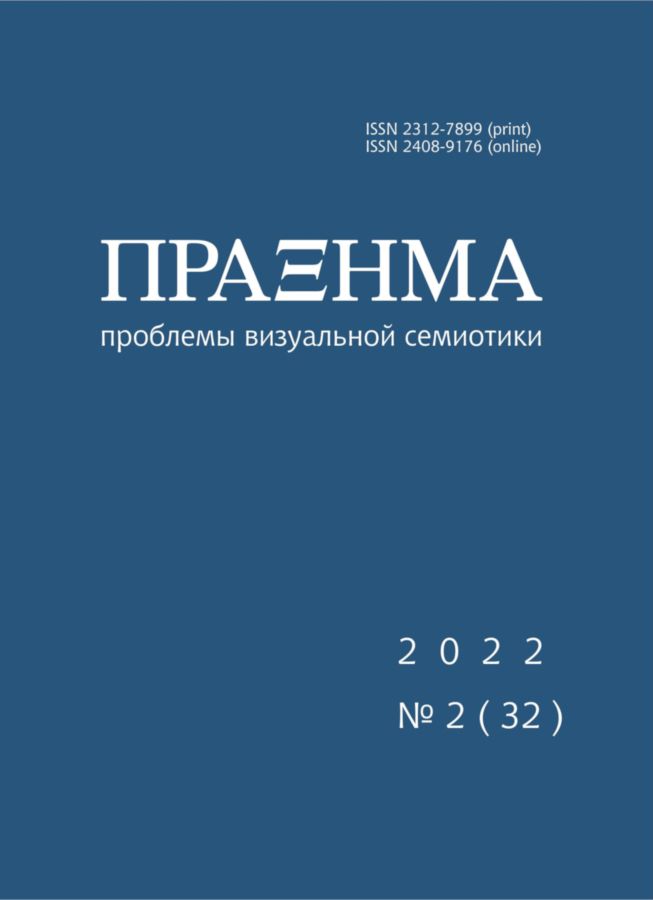ICONOLOGY OF THE PICTORIAL ELEMENTS OF POEMS BY PRINCE VLADIMIR PALEY
- Authors: Markov A.V.1
-
Affiliations:
- Russian State University for the Humanities
- Issue: No 2 (2022)
- Pages: 68-87
- Section: ARTICLES
- URL: https://bakhtiniada.ru/2312-7899/article/view/269548
- DOI: https://doi.org/10.23951/2312-7899-2022-2-68-87
- ID: 269548
Cite item
Full Text
Abstract
About the authors
Alexander Viktorovich Markov
Russian State University for the Humanities
Email: markovius@gmail.com
Миусская площадь, д. 6, Москва, 125993, Россия
References
- Аверинцев 1995 – Аверинцев С. С. Специфика лирической героини в поэзии Анны Ахматовой: солидарность и двойничество // Wiener Slavistisches jahrbuch. 1995. Т. 41. С. 7–20.
- Аверинцев 2011 – Аверинцев С. С. По поводу статьи А. Зубова «Пути России» // Континент. 2011. Т. 148. С. 122–126.
- Айхенвальд 1893 – Апулей Люций. Амур и Психея : сказка Апулея / пер. с ла. Ю. А-дт. СПб. : журн. «Пантеон лит.», 1893. 48 с.
- Голлербах 1922 – Голлербах Э. Дворцы-музеи. Собрание Палей в Детском Селе. М. : Среди коллекционеров, 1922. 32 с.
- Зеленин 2016 – Зеленин Д. А. Взаимоотношения слова и образа в эмблематике: проблемные случаи // Эмблематика и эмблематичность в западноевропейской и русской культуре. М. : Intrada, 2016. С. 59–75.
- Марков 2020а – Марков А. В. «Карнавал» Шумана в поэзии Дмитрия Кленовского // Studia Litterarum. 2020. Т. 5, № 2. С. 270–285.
- Марков 2020б – Марков А. В. Чувство родины: иконологическая программа иллюстраций к «Городу Муз» Э. Голлербаха // Наследие веков. 2020. № 4. С. 28–36.
- Найман 1999 – Найман А. Г. Рассказы об Анне Ахматовой. М. : Вагриус, 1999. 429 с.
- Палей 1916 – Палей В., кн. Стихотворения. Петроград : Т-во Р. Голике и А. Вильборг, 1916. 104 + iv с.
- Экштут 2017 – Экштут С. А. Возрожденная революцией. Жизнь и необыкновенные приключения героини картины Ю. П. Анненкова // Новое прошлое / The New Past. 2017. № 2. С. 26–46.
- Belting 2005 – Belting H. Image, medium, body: a new approach to iconology // Critical inquiry. 2005. Vol. 31 (2). P. 302–319.
- Farné 2019 – Farné R. Didactic iconology // IMG journal. 2019. Vol. 1 (1). С. 122–127.
- Müller 2011 – Müller M. G. Iconography and iconology as a visual method and approach // The SAGE handbook of visual research methods. 2011. Vol. 1. P. 283–297.
- Olson 2004 – Olson L. C. Benjamin Franklins vision of American community: a study in rhetorical iconology. Columbia : University of South Carolina Press, 2004. 298 p.
- Sherer 2020 – Sherer D. Panofsky on Architecture: Iconology and the Interpretation of Built Form, 1915–1956, Part I // History of Humanities. 2020. Vol. 5 (1). P. 189–224.
- Stein 2021 – Stein C. Medieval Naturalia: Identification, Iconography, and Iconology of Natural Objects in the Late Middle Ages // Medievalista. 2021. Vol. 29. P. 211–241.
Supplementary files







